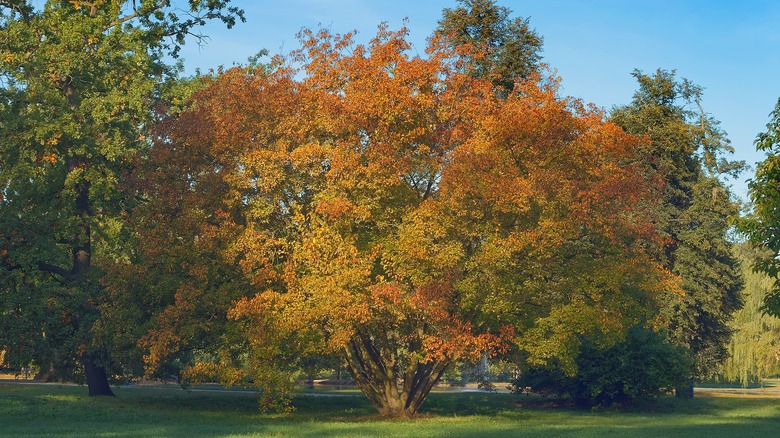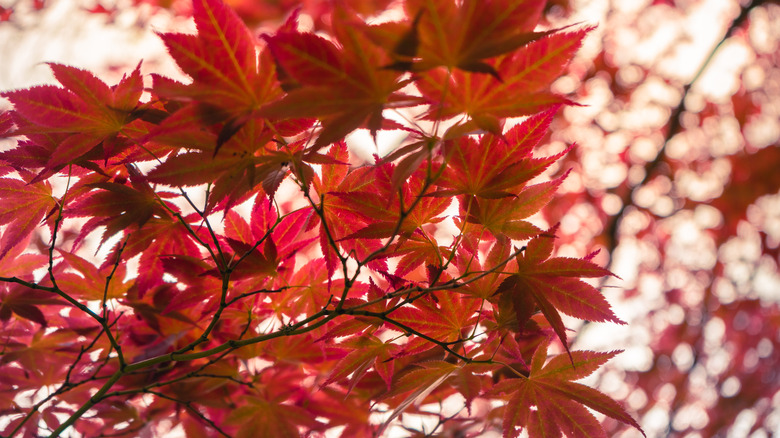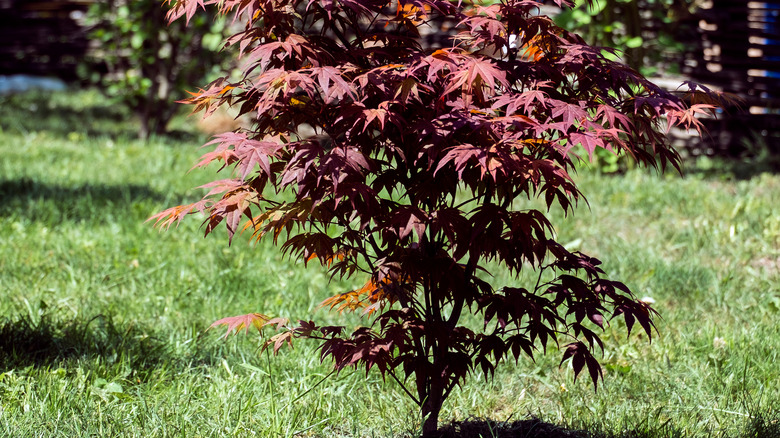Why You Might Regret Planting An Amur Maple Tree In Your Yard
While maple trees can be a beautiful addition to a yard, not all of them are worth the effort — some, like the amur maple tree, can even cause some big problems. While its red, orange, and yellow leaves may look stunning and it may be tempting to grow one, there are better trees that can bring romance to your yard. The amur maple is known to grow aggressively and can have a negative impact on a local ecosystem — so you may regret growing it.
Amur maple trees have been in the United States since the 1860s and are native to Asia, particularly in parts of China, Japan, and Manchuria. Although not all non-native plants are invaders, this tree is considered invasive in much of the northeast as well as in some Midwest states, including CT, IL, MA, MO, NY, VT, and WI. The tree can spread rapidly, and preventing it from taking over can be a difficult task. While it may be fine to grow it in an area where it isn't considered invasive, you should be careful about how you do it and should be mindful of its potential to overwhelm your yard.
How amur maple takes over your yard
When the amur maple is introduced to your yard, it can grow too well and begin to displace native trees and shrubs that are in the surrounding area. The tree spreads a set of more than 5,000 seeds that are carried by the wind, and as a result, the tree starts growing in many other spots, taking over more than its fair share of space. This can disrupt the local ecosystem and displace wildlife too.
This tree also produces allelopathic chemicals that can directly limit the growth of other plants in the area and inhibit their reproductive capabilities. The amur maple tree forms monocultures that create a high amount of shade. This shade can prevent other greenery beneath it from growing properly, particularly those that need a lot of sun. Planting these trees and keeping them around may cause problems and could lead to the whole area getting overrun by them. You'll want to avoid growing amur maple trees in states where they're considered invasive and should follow all restrictions in your local area. You may also want to consider growing other stunning maple trees instead.
Preventing the spread of amur maple trees
Despite their risks, it can be acceptable to plant an amur maple tree if you don't live in a place where they're considered invasive, but be sure to check for restrictions in your area before you decide to do so. If you grow one, don't plant it any closer than 100 yards from areas where it will be difficult to keep close control over seedlings. Forest edges, woodlands, and prairies should be avoided since the amur maple can invade open habitats very easily. Avoid any areas where you can't easily access and remove seedlings if they begin to grow. Otherwise, you may find that the tree becomes invasive and takes over the natural ecosystem surrounding it.
If you want to prevent the spread of amur maple trees, you can remove them by hand. When you do, remove their roots so that they won't grow back. You can also use a lawnmower to mow saplings that you notice before they begin to grow larger. Prescribed burning is an option to consider when removing these as well. Herbicides can also be useful when dealing with these maple trees and can help you eliminate them before they spread and hurt native species and wildlife.


